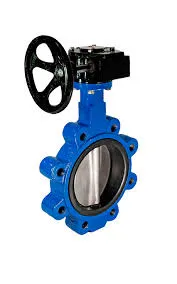നവം . 16, 2024 06:15 Back to list
Single Core Electrical Wire for Reliable Performance and Versatile Wiring Solutions
Understanding Single Core Cable Wire Features and Applications
Single core cable wire is a fundamental component in electrical and electronic systems, widely utilized for its excellent conductivity and flexibility. Typically made from copper or aluminum, single core wires comprise one conductor that is insulated with a protective layer, making them ideal for various applications.
One of the primary advantages of single core cable wires is their simplicity. With just one copper or aluminum conductor, they are lightweight and easy to manipulate, making them suitable for a range of environments. Their design contributes to a reduction in electrical resistance, thereby enhancing efficiency during transmission. This quality makes them popular in low-voltage applications, such as household wiring, power distribution, and lighting circuits.
Another significant aspect of single core wires is their insulation materials. Common insulating materials include PVC (Polyvinyl Chloride), XLPE (Cross-linked Polyethylene), and rubber. Each of these materials provides different levels of thermal and mechanical protection, allowing users to select wires based on specific environmental conditions. For instance, wires with PVC insulation are particularly suited for indoor applications due to their affordability and ease of installation, while XLPE-insulated wires offer superior thermal resistance, making them ideal for outdoor and high-temperature applications.
single core cable wire

Single core cable wires are also known for their versatility. They can be used in a variety of applications, including automotive wiring, telecommunications, and industrial machinery. In the automotive sector, they are commonly employed for electrical systems, such as battery connections and lighting. In telecommunications, single core wires facilitate data transmission and signal integrity, supporting both residential and commercial networks.
Moreover, the installation and maintenance of single core wires are comparatively straightforward. Technicians can easily deploy these wires in different configurations, and their robust nature means that they require minimal upkeep. However, it is crucial to observe standard safety guidelines and ensure proper handling practices to minimize hazards related to electrical shock or fire.
Despite their advantages, single core cables are not without limitations. They are more susceptible to physical damage compared to multi-core wires, making it critical to implement protective measures in high-risk environments. Additionally, while they excel in low-voltage applications, their performance in high-voltage settings may not be adequate, necessitating the use of multi-core cables.
In conclusion, single core cable wire serves as an essential element in modern electrical systems, offering efficiency, simplicity, and versatility for a variety of applications. By understanding their characteristics and potential uses, individuals and businesses can make informed decisions when selecting the appropriate cable type for their specific needs. Whether it's for home wiring or industrial use, single core cables remain a staple in the ever-evolving world of electricity and electronics.
Share
-
Reliable Wafer Type Butterfly Valves for Every IndustryNewsJul.25,2025
-
Reliable Flow Control Begins with the Right Ball Check ValveNewsJul.25,2025
-
Precision Flow Control Starts with Quality ValvesNewsJul.25,2025
-
Industrial Flow Control ReliabilityNewsJul.25,2025
-
Engineered for Efficiency Gate Valves That Power Industrial PerformanceNewsJul.25,2025
-
Empowering Infrastructure Through Quality ManufacturingNewsJul.25,2025